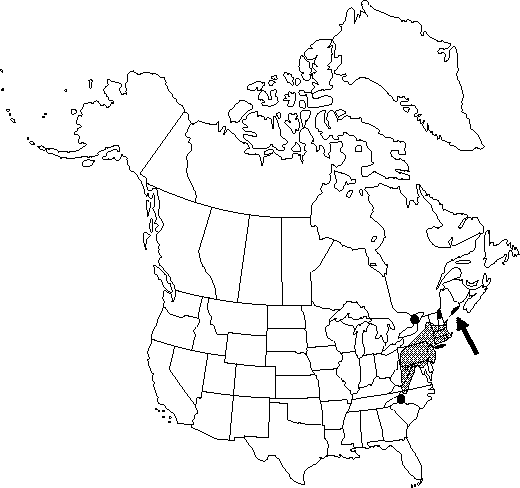Quercus ilicifolia
Beytr. Teut. Forstwiss., 79, plate 6, fig. 17. 1787.
Trees or shrubs, deciduous, to 6 m. Bark dark gray, becoming shallowly fissured and scaly, inner bark pinkish. Twigs brown or yellowish-brown, 1.5-3 mm diam., pubescent. Terminal buds dark reddish-brown, ovoid, 2-4.5 mm, apex puberulent. Leaves: petiole (8-) 10-25 mm, pubescent. Leaf-blade ovate to elliptic or obovate, 50-120 × 30-90 mm, base cuneate to obtuse, margins with 3-7 acute lobes separated by shallow sinuses and 5-14 awns, apex acute; surfaces abaxially pale green to gray, tomentose, adaxially glossy dark green, glabrous, secondary-veins raised on both surfaces. Acorns biennial; cup saucer-shaped to cupshaped, 5-9 mm high × 10.5-17 mm wide, covering 1/4-1/3 (-1/2) nut, outer surface puberulent, inner surface pubescent, scale tips tightly appressed, acute; nut ovoid to subglobose, 9.5-16 × 8-11 mm, striate, puberulent, scar diam. 4.8-7 mm. 2n = 24.
Phenology: Flowering spring.
Habitat: Dry, sandy soils and open rocky outcrops
Elevation: 0-1500 m
Distribution

Conn., Del., Maine, Md., Mass., N.H., N.J., N.Y., N.C., Pa., R.I., Vt., Va., W.Va.
Discussion
Quercus ilicifolia reportedly hybridizes with Q. coccinea, Q. falcata, Q. imbricaria, Q. marilandica, Q. phellos, Q. rubra, and Q. velutina.
The Iroquois considered Quercus ilicifolia very helpful in treating gynecological problems (D. E. Moerman 1986).
Selected References
None.
